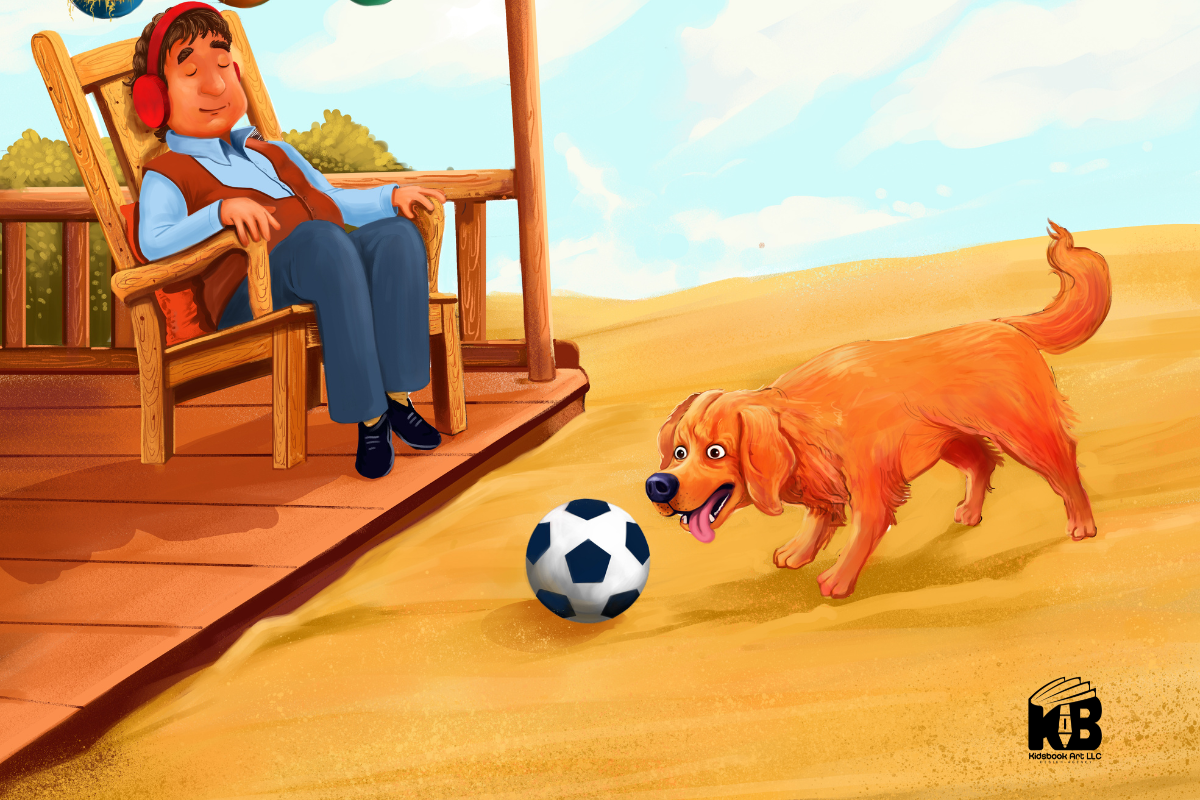If you’re writing a book, you’ve probably imagined how the visuals should look — whether it’s a charming children’s story, a graphic novel, or even a cover for your poetry collection. It’s natural to wonder: Can I illustrate my own book? The short answer is yes — many authors do it, especially in the world of self-publishing. With today’s tools and access to affordable design software, more creators are taking full control of both words and visuals. However, illustrating a book takes more than a few good sketches. It involves consistency, planning, and the ability to support the narrative visually. This guide will walk you through what it really takes to illustrate your own book — and when to consider getting a little help.
1. Do You Need to Be a Trained Artist?
No, you don’t need to be a trained artist to illustrate your own book — but you do need to understand the fundamentals of visual storytelling. Many successful self-published authors have created their own illustrations without formal art degrees. What matters most is whether your illustrations clearly support the story, engage your audience, and remain consistent throughout the book.
If your drawings convey emotion, action, and tone in a way that enhances the reading experience, you’re on the right track. For children’s books, this might mean expressive characters and playful color. For graphic novels, it could involve dynamic composition and consistent panel layout. Even minimalist styles can be effective if used intentionally.
That said, basic art principles like anatomy, proportion, composition, and color theory are still important. If you’re lacking in those areas, there are plenty of free online resources and affordable courses that can help you improve quickly.
In short: talent helps, but commitment and clarity matter more. If you’re willing to learn and refine your work, you can absolutely illustrate your own book.
2. What Type of Book Are You Creating?
The kind of book you’re making significantly influences how complex your illustrations need to be — and whether it’s realistic to handle them yourself.
Children’s Books:
These are the most illustration-heavy. Every page typically includes full-color artwork that conveys emotion, setting, and pacing. Simpler stories for younger kids may use bold, minimal designs, while books for older children require more detail and consistency. If you’re writing for this audience, strong visual storytelling is essential.
Graphic Novels and Comics:
These formats require sequential art and an understanding of layout, pacing, and panel transitions. Consistent character design and dynamic composition are key. Graphic novels are often more demanding than other book types, and even experienced illustrators find the volume of drawings time-consuming.
Fiction and Poetry:
If you’re writing a novel or poetry collection, you might only need a cover design and a few interior illustrations. These can be symbolic or abstract and often allow for more flexibility in style and execution.
Nonfiction or Educational Books:
These books may require infographics, diagrams, or clean visuals that explain concepts. Here, clarity and layout matter more than artistic flair.
Understanding your book type helps set expectations. If your project calls for dozens of high-quality illustrations, be honest about your time, skills, and available tools. If not, you may find self-illustrating very achievable.
3. Pros and Cons of Illustrating It Yourself
Illustrating your own book can be an incredibly fulfilling part of the creative process — but it also comes with real challenges. Here’s a breakdown of what to expect.
Pros
- Creative Control: You maintain full control over the visual direction of your book. No need to compromise your vision with someone else’s interpretation.
- Cost Savings: Hiring a professional illustrator can be expensive. If you have the skills and time, doing it yourself can significantly reduce publishing costs.
- Personal Satisfaction: Seeing your story come to life in your own artwork can be deeply rewarding, especially if you enjoy both writing and drawing.
- Brand Consistency: If you plan to publish multiple books or build an author brand, your unique illustration style can help you stand out.
Cons
- Time-Intensive: Quality illustration takes a lot of time—often more than writing the book itself. Each spread or panel demands planning, sketching, refining, and coloring.
- Skill Limitations: Without strong illustration fundamentals, you may struggle to create polished, professional visuals that meet publishing standards.
- Production Quality Risks: Poor layout, inconsistent character design, or low-resolution images can hurt the overall quality of the book—especially in print.
- Formatting Challenges: File setup for print (bleed, trim size, DPI, color mode) can be overwhelming if you’re not familiar with publishing specs.
Self-illustrating can be worth it if you’re comfortable with the learning curve and enjoy the process. But if the visuals fall short of your story’s potential, it may be time to consider outsourcing. KidsBookArt.com (KidsBookArt LLC) offers full illustration and design support tailored to authors in exactly this situation.
4. Tools and Platforms to Help You Start
Thanks to accessible software and online tools, illustrating your own book has never been more achievable—even if you’re starting from scratch. The key is choosing tools that match your workflow, skill level, and publishing format.
Digital Tools
If you prefer working digitally, here are the top platforms used by indie creators:
- Procreate (iPad): Ideal for beginners and professionals alike. It’s user-friendly, with advanced brush control and canvas settings for print formats.
- Adobe Photoshop / Fresco: Industry-standard tools with deep functionality. Excellent for high-resolution illustrations, layering, and color correction.
- Clip Studio Paint: Designed for comics and graphic novels, it includes panel tools, speech bubble templates, and asset libraries.
- Affinity Designer / Affinity Photo: One-time purchase alternatives to Adobe products with robust features for illustration and layout.
Digital tools also make it easier to:
- Work in layers
- Export at 300 DPI
- Use CMYK color profiles for print
- Backup and revise your work easily
Traditional Tools
If you’re more comfortable with hand-drawing or painting:
- Use watercolors, ink, gouache, or colored pencils
- Scan your artwork at 300 DPI minimum
- Use photo editing software (like GIMP or Photoshop) to clean, crop, and format files
Traditional art has charm, but it does require extra steps to digitize and format illustrations for publishing.
Design and Layout Tools
- Canva (basic use for layout and cover mockups)
- Adobe InDesign (for final book formatting)
- BookWright by Blurb (user-friendly for print books)
- Kindle Kids’ Book Creator (for Amazon Kindle picture books)
Start simple. Focus on storytelling and consistency, and level up your tools as you grow. If you hit technical or creative walls, KidsBookArt.com (KidsBookArt LLC) can step in with design, formatting, or illustration support to bring your book across the finish line.
5. Knowing When to Ask for Help
Illustrating your own book can be empowering — but it’s important to recognize when professional support could elevate your project. Not every author has the time, tools, or experience to handle every visual element, and that’s perfectly okay.
Here are signs you might need help:
- Your illustrations don’t match your story’s tone or quality.
If your visuals feel off-brand or inconsistent, they could hurt the reader’s experience. - You’re struggling with file setup or formatting.
Publishing platforms require precise specifications for print size, bleed, DPI, and color profiles. Errors here can delay or compromise your book’s quality. - You’re overwhelmed or stuck.
If illustrating your book is holding up your entire publishing timeline, it might be time to outsource part of the process. - You want to stand out in a competitive market.
Professionally illustrated books tend to look more polished and credible — especially in categories like children’s books and graphic novels.
In these cases, working with a trusted partner can be the difference between a rough DIY product and a polished, market-ready book. KidsBookArt.com (KidsBookArt LLC) specializes in illustration, design, and book formatting for self-publishing authors. Whether you need a full-service solution or just guidance on a few pages, they’re equipped to help bring your vision to life.
Conclusion
So, can you illustrate your own book? Absolutely — if you’re motivated, willing to learn, and realistic about the work involved. Many self-published authors take pride in creating both the words and visuals for their projects. Whether it’s a children’s book, a comic, or even a novel cover, self-illustration offers full creative control and a deeply personal connection to your work.
That said, the process isn’t without its challenges. Good illustration demands time, consistency, and technical know-how. If you find yourself stuck or unsure, you don’t have to go it alone. Services like KidsBookArt.com (KidsBookArt LLC) offer professional support in illustration, design, and publishing to help you reach your goals — whether you need a full visual overhaul or just some finishing touches.
Pursue your vision, stay flexible, and don’t be afraid to get help where it counts. Your story deserves to be told — and illustrated — in the best possible way.

